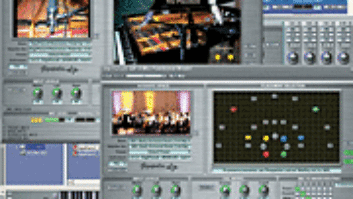Finding the right sound to play in Giga-Studio can be a daunting task, even with an 80GB hard drive dedicated to Giga-Studio-recognized sound files. Now imagine using multiple GigaStudio systems with multiple dedicated hard drives on each of them, and the job of finding the right sound becomes overwhelming. Fortunately, GigaStudio comes with a few tools that not only organize your sounds, but also allow you to create and save instruments on-the-fly.
WHAT GOES WHERE
If you use a single GigaStudio system, then, obviously, all of your GigaStudio-related sound files will be stored on at least one dedicated hard drive. Use the Windows Explorer to organize those files in a logical manner. For example, I place the commercial Giga-format libraries I own in the folder that GigaStudio automatically creates when the program is first installed. Furthermore, I organize each library into its own folder.
I place Giga-format libraries converted from other sources into a different folder, arranging them in subfolders according to their instrumental classification. Likewise, I systematize .WAV files by creating separate folders for them, with subfolders for each sound category. Naturally, you can extrapolate on this system so that one drive, for example, contains all of your commercial libraries, while another drive holds all of your converted libraries, and so on. If you use multiple GigaStudio systems, then you can store commercial libraries on one system, store .WAV files that can be used to make .GIG files on another system, and so on.
However, multiple GigaStudio systems users may want to use other criteria to organize their sounds. For example, playing certain instruments in GigaStudio, such as pianos, percussion and other keyboard instruments, can easily tax the program’s polyphony limits. If you use those types of instruments regularly, then you may want to store these libraries in one system that is prioritized for playing these sounds. Similarly, some Giga-format libraries, such as Jim Corrigan’s Nashville High-Strung Guitars, use multiple instrument levels to reproduce sounds. To play these sounds, you have to link GigaStudio’s MIDI ports. In order to get the maximum use out of linked ports, you may want to store all multilevel instrument libraries on the same system.
THE QUICK AND THE DEADLINE
Logically organizing your sound files makes it easier to find files on your own, but GigaStudio also offers QuickSound, a powerful database feature to organize and find sounds. When you open GigaStudio, QuickSound scans all the drives and folders for the different files GigaStudio can potentially play. Every time you reopen GigaStudio, it will refresh the database to update each sound file you’ve added, deleted or moved. Of course, you don’t have to reopen GigaStudio to refresh the QuickSound database. Select the QuickSound tab in the Settings menu and you can rebuild the database.
GigaStudio’s Search feature helps you find your sounds more easily in the QuickSound database. Type in a search word and GigaStudio will display all the files that contain that word in its name. Better still, you can right-click on a file name in the Directory pane and a File Properties box opens. You can add keywords into the File Properties box and GigaStudio will use those to find files when you perform a search. In fact, if you select groups of files, you can apply merged file properties to all selected files. However, make sure the read-only attribute for those files is disabled, otherwise QuickSound will ignore the keywords. To disable the read-only attribute, go into Windows Explorer, select the appropriate files and right-click on their names. Select Properties from the pop-up menu and simply uncheck the read-only box when the Properties dialog box opens.
QuickSound is also useful when using the Distributed Wave feature in GigaStudio. Essentially, the Distributed Wave tab allows you to load .WAV files into the Loaded Waves pool, mapping each file to MIDI notes as you go. You can elect to save the mapped, loaded .WAV files as a .GIG file by right-clicking in the Loaded Waves pane, or you can copy selected files from the Loaded Waves pool into the Wave Palette pane above. You can then save the sound list in the Wave Palette as a distributed Wave collection file. However, don’t move the associated sound files after you save a distributed Wave collection, because it loses the file path and you will have to rebuild the collection again.
SOUND APPLICATIONS
Using the QuickSound, Search and Distributed Wave features together is a great way to call up and group sound effects or cue material together without using Giga-Studio’s Instrument Editor or moving .WAV files around in Windows Explorer. It’s also great for creating .GIG files on-the-fly, particularly percussion instruments. You can then just use newly created instruments as is, or further edit the .GIG files to create more sophisticated instruments later.
Zack Price is a longtime GigaStudio user who’s been fortunate enough to learn from the real GigaGurus: Jim Van Buskirk, David Govett, Jim Corrigan and John Thomas.




